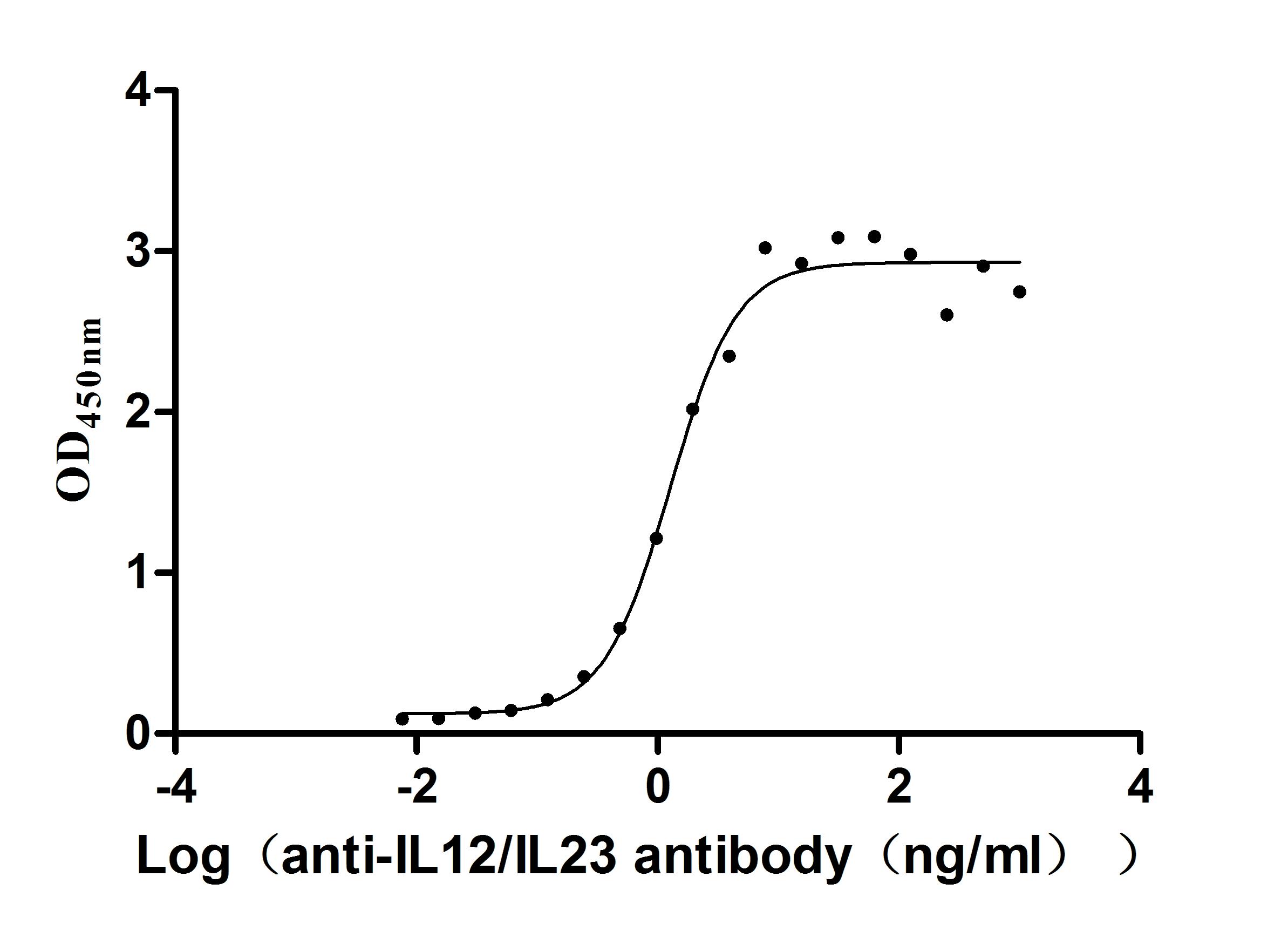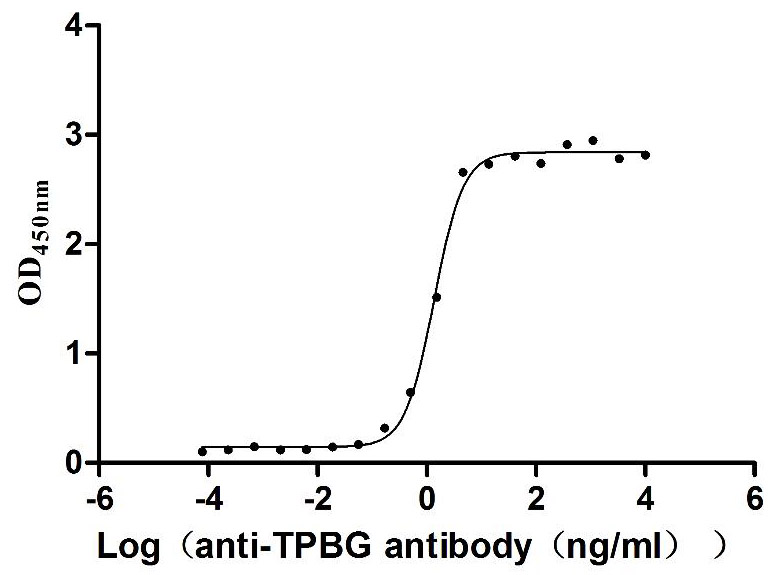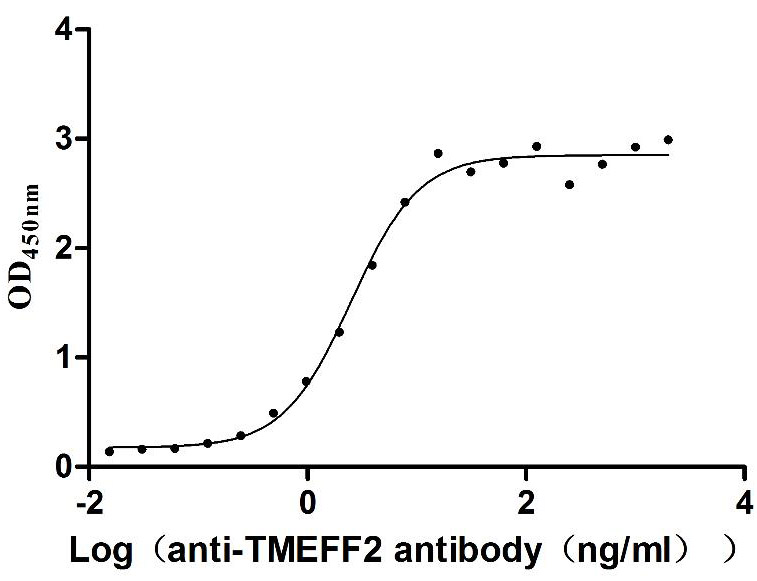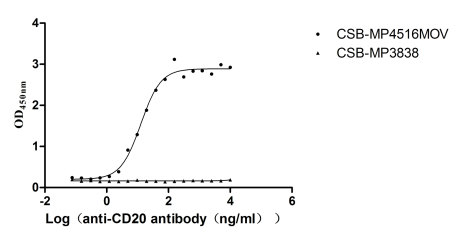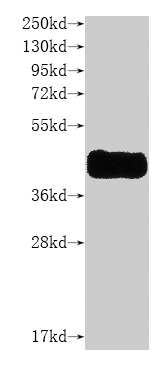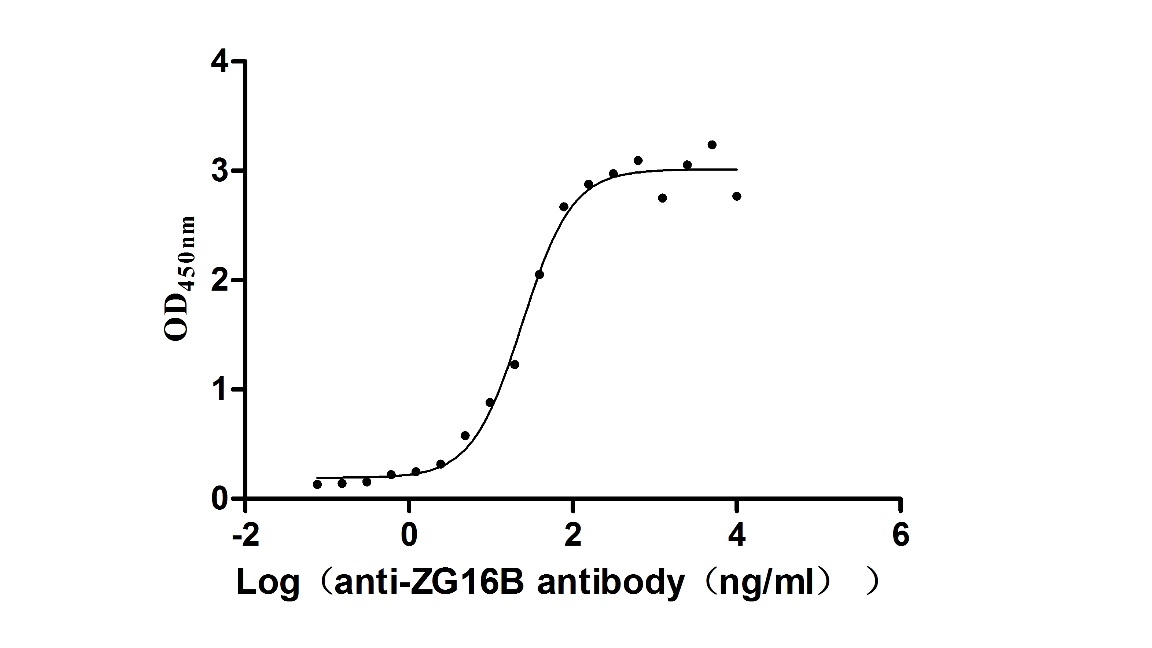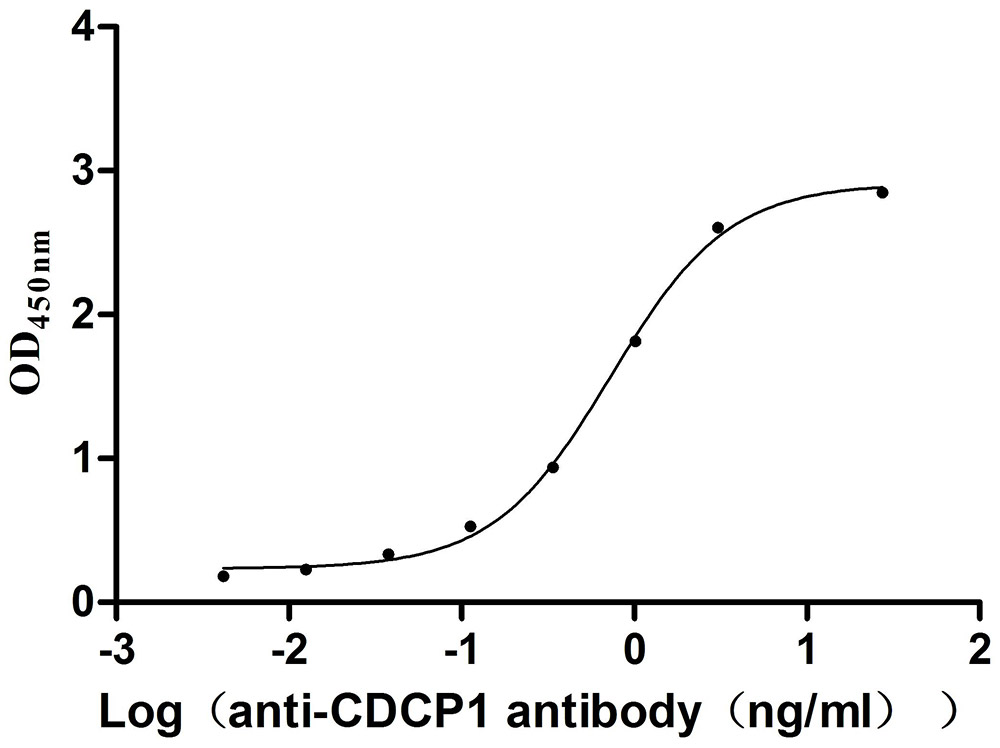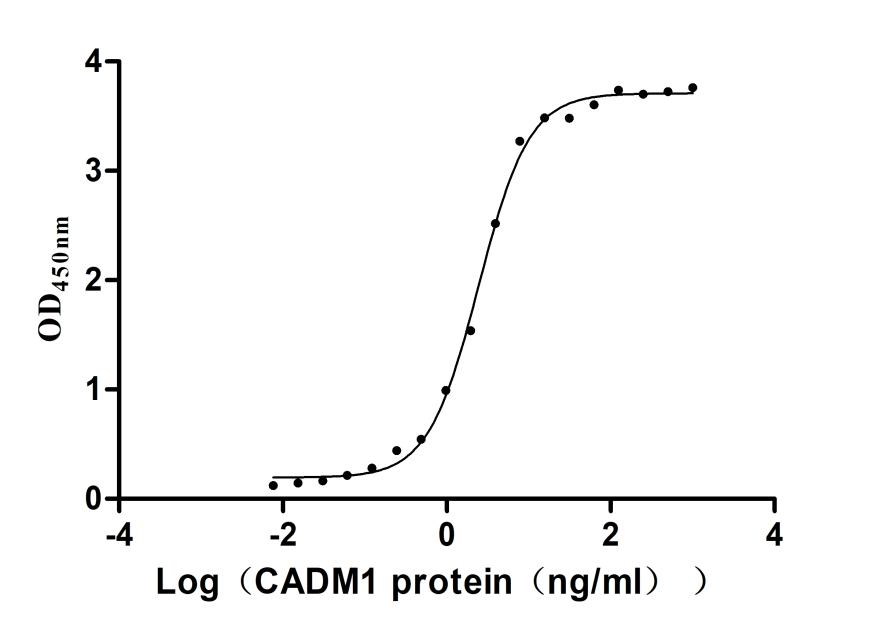Recombinant Human Barttin (BSND), partial
-
中文名稱:Recombinant Human Barttin(BSND),partial
-
貨號:CSB-YP837883HU
-
規(guī)格:
-
來源:Yeast
-
其他:
-
中文名稱:Recombinant Human Barttin(BSND),partial
-
貨號:CSB-EP837883HU
-
規(guī)格:
-
來源:E.coli
-
其他:
-
中文名稱:Recombinant Human Barttin(BSND),partial
-
貨號:CSB-EP837883HU-B
-
規(guī)格:
-
來源:E.coli
-
共軛:Avi-tag Biotinylated
E. coli biotin ligase (BirA) is highly specific in covalently attaching biotin to the 15 amino acid AviTag peptide. This recombinant protein was biotinylated in vivo by AviTag-BirA technology, which method is BriA catalyzes amide linkage between the biotin and the specific lysine of the AviTag.
-
其他:
-
中文名稱:Recombinant Human Barttin(BSND),partial
-
貨號:CSB-BP837883HU
-
規(guī)格:
-
來源:Baculovirus
-
其他:
-
中文名稱:Recombinant Human Barttin(BSND),partial
-
貨號:CSB-MP837883HU
-
規(guī)格:
-
來源:Mammalian cell
-
其他:
產(chǎn)品詳情
-
純度:>85% (SDS-PAGE)
-
基因名:BSND
-
Uniprot No.:
-
別名:BART ; Bartter syndrome infantile with sensorineural deafness; Bartter syndrome; infantile; with sensorineural deafness (Barttin); Barttin; Bsnd; BSND_HUMAN; deafness; autosomal recessive 73; DFNB 73; DFNB73
-
種屬:Homo sapiens (Human)
-
蛋白長度:Partial
-
蛋白標(biāo)簽:Tag?type?will?be?determined?during?the?manufacturing?process.
The tag type will be determined during production process. If you have specified tag type, please tell us and we will develop the specified tag preferentially. -
產(chǎn)品提供形式:Lyophilized powder
Note: We will preferentially ship the format that we have in stock, however, if you have any special requirement for the format, please remark your requirement when placing the order, we will prepare according to your demand. -
復(fù)溶:We recommend that this vial be briefly centrifuged prior to opening to bring the contents to the bottom. Please reconstitute protein in deionized sterile water to a concentration of 0.1-1.0 mg/mL.We recommend to add 5-50% of glycerol (final concentration) and aliquot for long-term storage at -20℃/-80℃. Our default final concentration of glycerol is 50%. Customers could use it as reference.
-
儲存條件:Store at -20°C/-80°C upon receipt, aliquoting is necessary for mutiple use. Avoid repeated freeze-thaw cycles.
-
保質(zhì)期:The shelf life is related to many factors, storage state, buffer ingredients, storage temperature and the stability of the protein itself.
Generally, the shelf life of liquid form is 6 months at -20°C/-80°C. The shelf life of lyophilized form is 12 months at -20°C/-80°C. -
貨期:Delivery time may differ from different purchasing way or location, please kindly consult your local distributors for specific delivery time.Note: All of our proteins are default shipped with normal blue ice packs, if you request to ship with dry ice, please communicate with us in advance and extra fees will be charged.
-
注意事項:Repeated freezing and thawing is not recommended. Store working aliquots at 4°C for up to one week.
-
Datasheet :Please contact us to get it.
相關(guān)產(chǎn)品
靶點詳情
-
功能:Functions as a beta-subunit for CLCNKA and CLCNKB chloride channels. In the kidney CLCNK/BSND heteromers mediate chloride reabsorption by facilitating its basolateral efflux. In the stria, CLCNK/BSND channels drive potassium secretion by recycling chloride for the basolateral SLC12A2 cotransporter.
-
基因功能參考文獻(xiàn):
- These results suggest that BSND is expressed only in normal salivary glands and oncocytic salivary gland tumors such as Warthin's tumor and oncocytoma PMID: 28470573
- results demonstrate that the carboxyl terminus of hClC-Kb is not part of the binding site for barttin, but functionally modifies the interplay with barttin. PMID: 26453302
- These results demonstrate that mutations in a cluster of hydrophobic residues within transmembrane domain 1 affect barttin-CLC-K interaction and impair gating modification by the accessory subunit PMID: 26063802
- R8W and G47R, two naturally occurring barttin mutations identified in patients with Bartter syndrome type IV, reduce barttin palmitoylation and CLC-K/barttin channel activity. PMID: 26013830
- BSND, was first modeled, and then, the identified mutation was further analyzed by using different bioinformatics tools. PMID: 21541222
- Case Report: G47R mutation decreases barttin expression, resulting CIC-K location being changed from the basement membrane to the cytoplasm in the tubule and might have varying effects on renal function associated with factors other than this gene. PMID: 21269598
- The mislocalization of CLC-K2 was identified as the molecular pathogenesis of Bartter syndrome by mutant barttins. PMID: 12761627
- ClC-Ka/barttin channels are regulated by SGK1 and SGK3, which may thus participate in the regulation of transport in kidney and inner ear. PMID: 15496163
- A missense, point mutation on gene BSND exon 1, affects the function of the CLC-K/barttin chloride channel and caused Bartter syndrome with sensorineural deafness in two families from Spain. PMID: 16572343
- Barttin mutations is associated with antenatal Bartter syndrome with sensorineural deafness PMID: 16773427
- Barttin modulates trafficking and function of ClC-K1 and ClC-Kb channels PMID: 16849430
- BSND-V43I, a common variant conferring partial loss of function, exhibits significant deviation from equilibrium in the Ghanaian normotensive control population PMID: 17954364
- Disruption of the gene encoding Barttin, BSND, results in a 'double knockout' of the functions of both ClCKA and ClCKB, manifesting as Bartter syndrome type IV with sensorineural deafness and an especially severe salt-losing phenotype. PMID: 18094726
- Bartter syndrome type IV can be caused by various derangements in the function of barttin, likely contributing to the diversity of observed phenotypes. PMID: 18776122
- Deletion of exons 2-4 in the BSND gene causes severe antenatal Bartter syndrome. PMID: 18843510
- In a large cohort of ante/neonatal Bartter syndrome, deafness, transient hyperkalaemia and severe hypokalaemic hypochloraemic alkalosis orientate molecular investigations to BSND, KCNJ1 and CLCNKB genes, respectively. PMID: 19096086
- Mutations of BSND can cause nonsyndromic deafness or Bartter syndrome. PMID: 19646679
- The molecular basis of DFNB73 autosomal recessive deafness is reported. PMID: 19646679
顯示更多
收起更多
-
相關(guān)疾病:Bartter syndrome 4A, neonatal, with sensorineural deafness (BARTS4A)
-
亞細(xì)胞定位:Cell membrane; Multi-pass membrane protein. Cytoplasm.
-
組織特異性:Expressed primarily in kidney. Expressed in specific nephron segments and in the stria vascularis of the inner ear.
-
數(shù)據(jù)庫鏈接:
Most popular with customers
-
Recombinant Human IL12B&IL12A Heterodimer Protein (Active)
Express system: Mammalian cell
Species: Homo sapiens (Human)
-
Recombinant Human Trophoblast glycoprotein (TPBG), partial (Active)
Express system: Mammalian cell
Species: Homo sapiens (Human)
-
Recombinant Human Tomoregulin-2 (TMEFF2), partial (Active)
Express system: Mammalian cell
Species: Homo sapiens (Human)
-
Recombinant Macaca fascicularis Membrane spanning 4-domains A1 (MS4A1)-VLPs (Active)
Express system: Mammalian cell
Species: Macaca fascicularis (Crab-eating macaque) (Cynomolgus monkey)
-
Recombinant Human C-C chemokine receptor type 8 (CCR8)-VLPs (Active)
Express system: Mammalian cell
Species: Homo sapiens (Human)
-
Recombinant Macaca fascicularis zymogen granule protein 16 homolog B (ZG16B) (Active)
Express system: Mammalian cell
Species: Macaca fascicularis (Crab-eating macaque) (Cynomolgus monkey)
-
Recombinant Mouse CUB domain-containing protein 1 (Cdcp1), partial (Active)
Express system: Mammalian cell
Species: Mus musculus (Mouse)
-
Recombinant Human Cytotoxic and regulatory T-cell molecule (CRTAM), partial (Active)
Express system: Mammalian cell
Species: Homo sapiens (Human)


